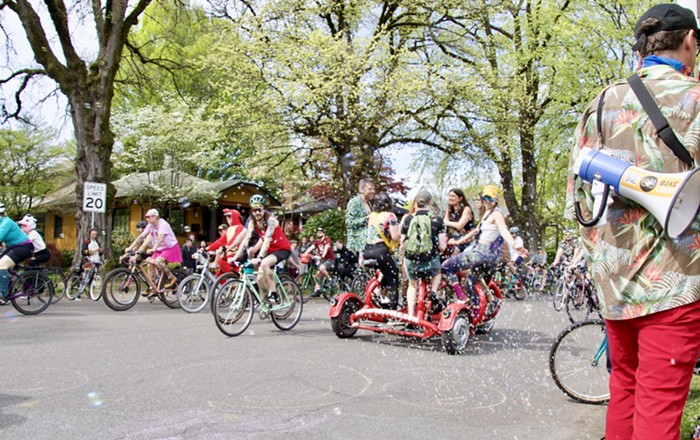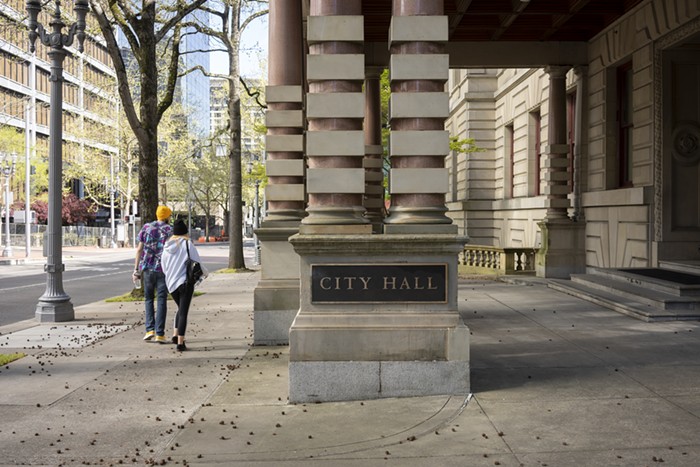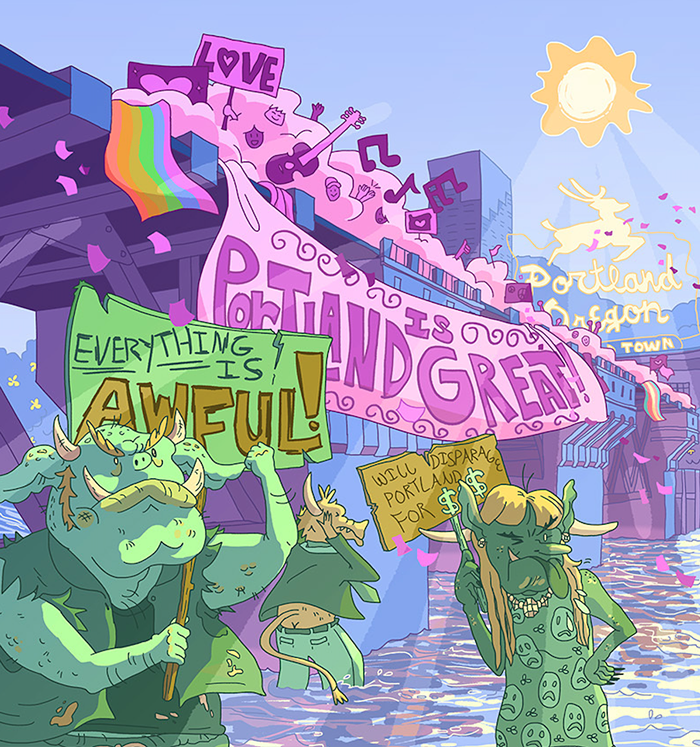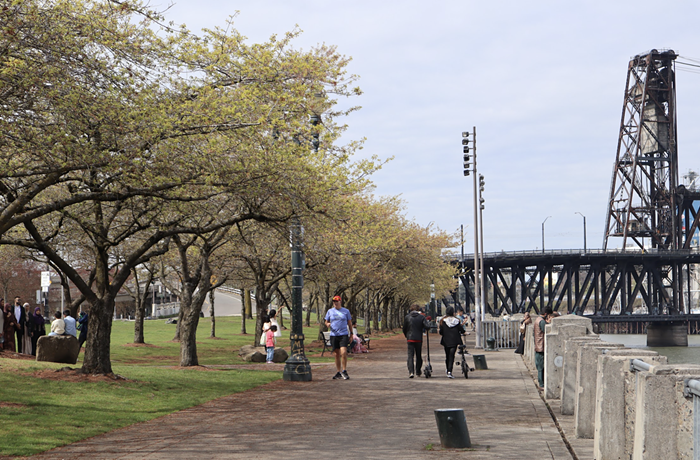
- Photos courtesy of the Columbia Slough Watershed Council
Dear Blogtownies,
I feel like you haven't really gotten a handle on this Worst. Night. Ever. thing yet. For starters, the thing you sent me to took place in the MORNING. Secondly, the bike tour of Portland's well field took place on one of the nicest days of the year thus far. It was—and I'm not just saying this—downright pleasant. I'm guessing that 38% of you decided I wouldn't want to get up at 8:45 in the morning and ride a bike for 16 miles for a supposedly boring tour of our water system. Here's the trick, though: I am kind of a science-y person in general (I even took geology as a voluntary elective in college), and I'm anti-bottled water, so the tour of Portland's groundwater wells was not totally out of the realm of my interests. And while I'm not an avid cyclist the way some of our staffers are (not yet, anyway—although this trip has me looking at prices for a new bike), the 16 miles were spread leisurely over the course of more than four hours. It wasn't until the very end of the ride that I even broke a sweat.
So: maybe the reason you voted for the bike tour is that you all just wanted to read a longish blog post about the tour itself. Well, here you go.
The tour was hosted by the Columbia Slough Watershed Council and the Portland Water Bureau, and experts from both talked about Portland's water system and the relationship of the Slough (it's pronounced "slew") to our auxiliary water supply. The bulk of Portland's water comes from the Bull Run Watershed, which is a remarkable, pristine water source. We're incredibly lucky to have it. But in times of high volume—during the height of the hot and dry Portland summer, usually—it's supplemented by the Columbia South Shore Well Field, a series of aquifers, stretching (roughly) from the south shore of the Columbia River down to I-84, and reaching from PDX all the way out to Troutdale.

What's an aquifer? It's a water-bearing layer of permeable rock—or, sometimes, sand, silt, or gravel—that's located beneath the ground, sometimes hundreds of feet below the surface. The 27 wells in the South Shore Well Field draw groundwater out of the rock and add it to the existing supply, which provides water to over 555,000 customers in the Portland area, plus an additional 325,000 customers through regional wholesale providers. We have great, fresh water here in Portland, and lots of it, which is not the case with the rest of the country, let alone the world.

The tour gathered at the Aloft Hotel, where we all signed in and were temporarily loaned some spiffy safety vests courtesy of the Water Bureau. The tour's first stop was at Well 28, where we went inside the housing see the mechanisms of the well. It's a massive, industrial thing, equipped with an engine of several hundred horsepower to draw the water up. We then jutted down to Johnson Lake, where Portland Water Bureau Hydrogeologist Randy Albright talked about how the groundwater recharges itself.

At this point we also learned a bit about Columbia Slough, the series of wetlands, rivers, ponds, and lakes that make up the south floodplain of the Columbia River. It's an environmentally protected area and home to some remarkable natural settings. Forest Park gets a lot of the glory, but parts of Columbia Slough—Johnson Lake, the Smith and Bybee Wildlife Area—are just as impressive for being natural areas in an urban setting.

We made a few more stops and learned about flood control, land use, and the Wellhead Protection Program, but the highlight, really, was just biking in the beautiful morning. The day turned out to be as nice as it could have possibly been, just under 70 with plenty of sunlight and bright blue sky. There were 44 registrants for the tour, which made for a strong army of brightly-clad cyclists that made safety issues very easy. Most of the ride took place along fairly untrafficked roads, although we did go through some busy intersections.

We also got to check out the massive solar panels at the Groundwater Pump Station, which extend for hundreds of feet—you can't really tell how impressive they are just from this photo—and had a lunch break at scenic Blue Lake Park, which I didn't know existed until that moment. There's a lot to learn about the Portland water system, and a lot of detail covered by the tour, most of which I am glazing over since I can tell you are getting fidgety at your desk just reading this far. It wasn't all grippingly fascinating, sure, but a lot of it was interesting, and the bike ride itself was great. Particularly the part where we barreled down the bike path along the Columbia River on the return leg. I have to say at this point that everyone from both the Water Bureau and the Columbia Slough Watershed Council was welcoming, informative, and enthusiastic—honestly, think about this: How many people do you know who have jobs they like so much that they'd happily and voluntarily get up on a Saturday morning to give a (free) tour of their working environments? I came away impressed with their efforts and admiring of the excellent system we have in place for our drinking water. As for the strains of the bike ride, I got a little extra sun and was slightly sore on Sunday, but I think that was mostly due to the Mercury anniversary party on Saturday night. I think you were all hoping I'd have a terrible time, so I'm not sorry at all that I disappointed you.
And bikers! Pedalpalooza starts on Thursday! Be sure to check out the Mercury's bike issue this week, too. It includes your complete guide to Pedalpalooza plus lots of other cool bike stuff. Bikes are neat! And drink Portland's tap water. Fuck the bottled stuff, seriously.















